7 Moral Ways to Prevent Workplace Harassment
This goes without saying, but you can’t control what everyone says or does. However, there are steps you can take to at least limit how often it does occur. Here are seven things you can do to prevent workplace harassment.

When you think of bullying, you might imagine school kids picking on each other during recess. Maybe they’re making fun of someone who isn’t good at sports trying to play kickball. Or perhaps your mind goes to high school girls cyberbullying each other on social media.
Whatever the case is, your initial thought might not go to bullying in the workplace. That’s because it has a different term: harassment. After I say that, you can probably think of some instances of this behavior.
At least 35% of people experience workplace harassment. This percentage is even higher depending on certain factors such as gender, position at work, and the industry that a person works in.
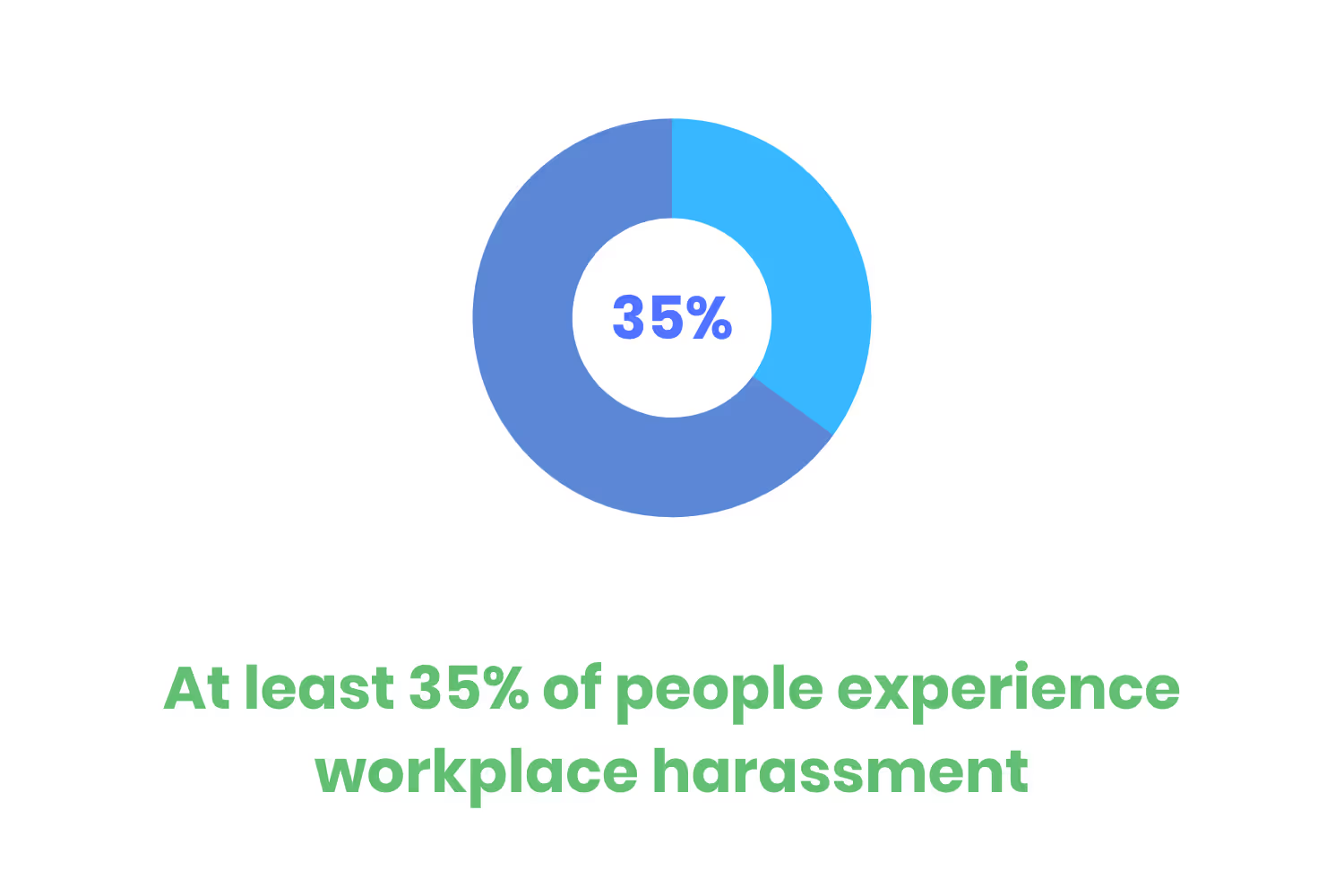
This inappropriate and offensive behavior can occur in a variety of ways, such as through sexual or verbal harassment. All forms are acceptable for the workplace. Repeated harassment is a recipe to cause so many problems in the office and eventually leads to a hostile work environment.
Because of the negative outcomes that this can cause for both employees and the company, it’s necessary to prevent it from occurring in the first place. As a manager, it can be hard to ensure that it doesn’t happen at all. This goes without saying, but you can’t control what everyone says or does.
However, there are steps you can take to at least limit how often it does occur. Here are seven things you can do to prevent workplace harassment.
Explain What It Is
As a manager, I know what you might be thinking. “Is it really necessary to explain what harassment is to my employees? It’s pretty obvious.”
Sure, you don’t want to seem like Captain Obvious to your team. They might feel like you’re wasting their time by explaining what they already know.
But surprisingly, not everyone knows what constitutes workplace harassment. 34% of workers are unsure about what behaviors create a hostile environment. And 32% were unaware that jokes qualify as harassment.
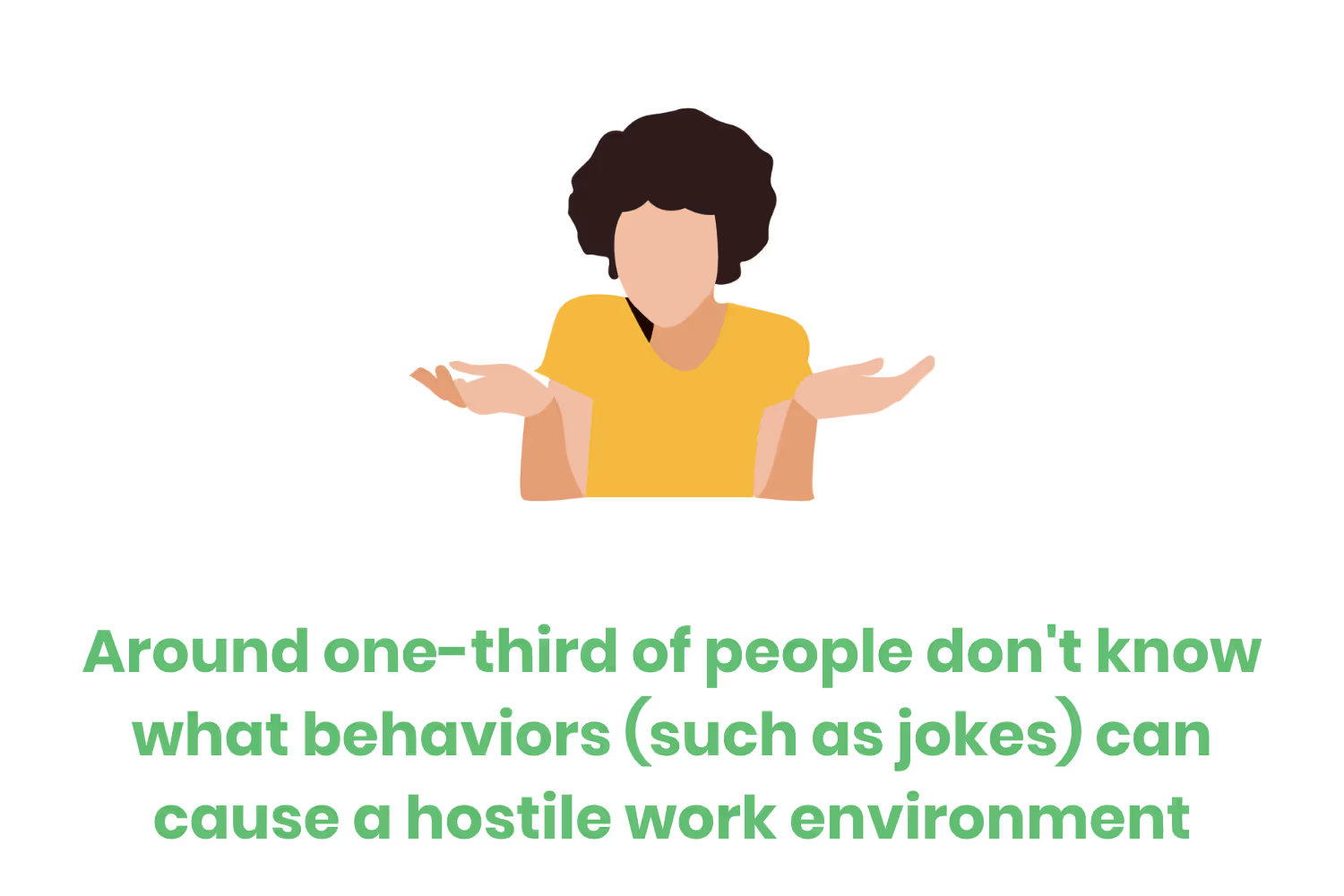
When people don’t know what it is, they won’t be able to recognize the inappropriate behaviors so that they can prevent and report them. Because of this, the first step to eliminating harassment is to educate your staff on what it is.
Implement Training Programs
Providing training programs is the easiest way to inform them of what workplace harassment is. Anything that someone wants to do well, such as a hobby, sport, or job, would need some kind of education. It would require training to become perfect in any of these areas.
The same is true for harassment prevention. People need training so that they understand how to identify and report situations to the best of their ability. It won’t be easy to avoid workplace harassment if they don’t know enough about it.
While this may also sound like an obvious solution, many companies don’t take it seriously. One in three companies doesn’t have anti-harassment training. This contributes to the problem of why many employees don’t know what qualifies as this offensive behavior.
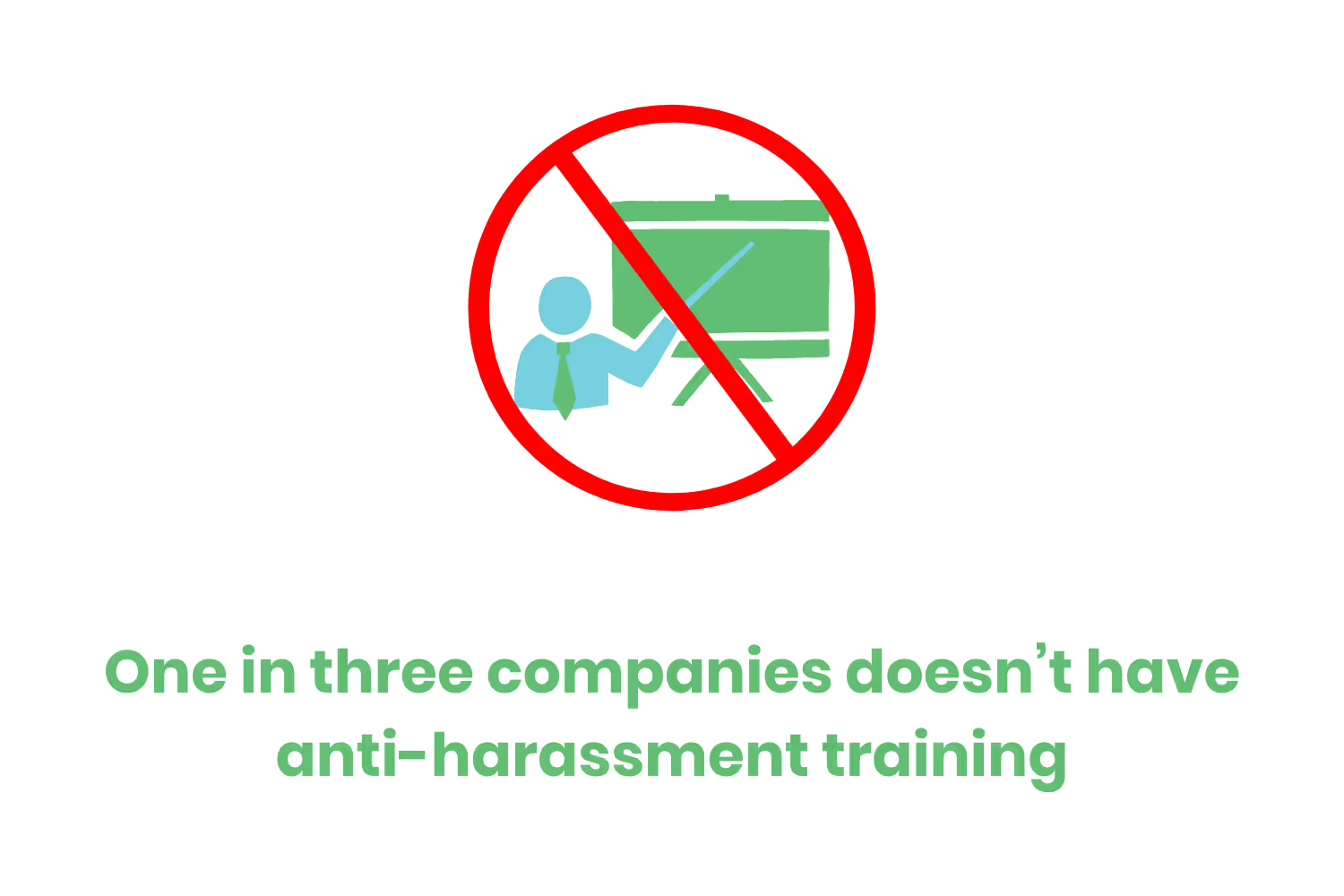
So by implementing training programs, people can formally learn all the ins and outs of anti-harassment. It’s more than just telling people during a meeting how to identify and prevent it. These training programs have more to offer. Since they can include quizzes, managers can confirm that staff is learning and understanding the topics discussed.
Set a Zero-Tolerance Policy
It’s one thing for people to understand how to prevent workplace harassment, but it’s another to do it. If management doesn’t enforce a prevention policy, then staff won’t take the training seriously.
Setting a zero-tolerance policy is necessary to keep this inappropriate behavior from happening. But what does this mean exactly to have a no-tolerance policy? Well, when someone becomes a victim, managers need to take action to make sure it stops.
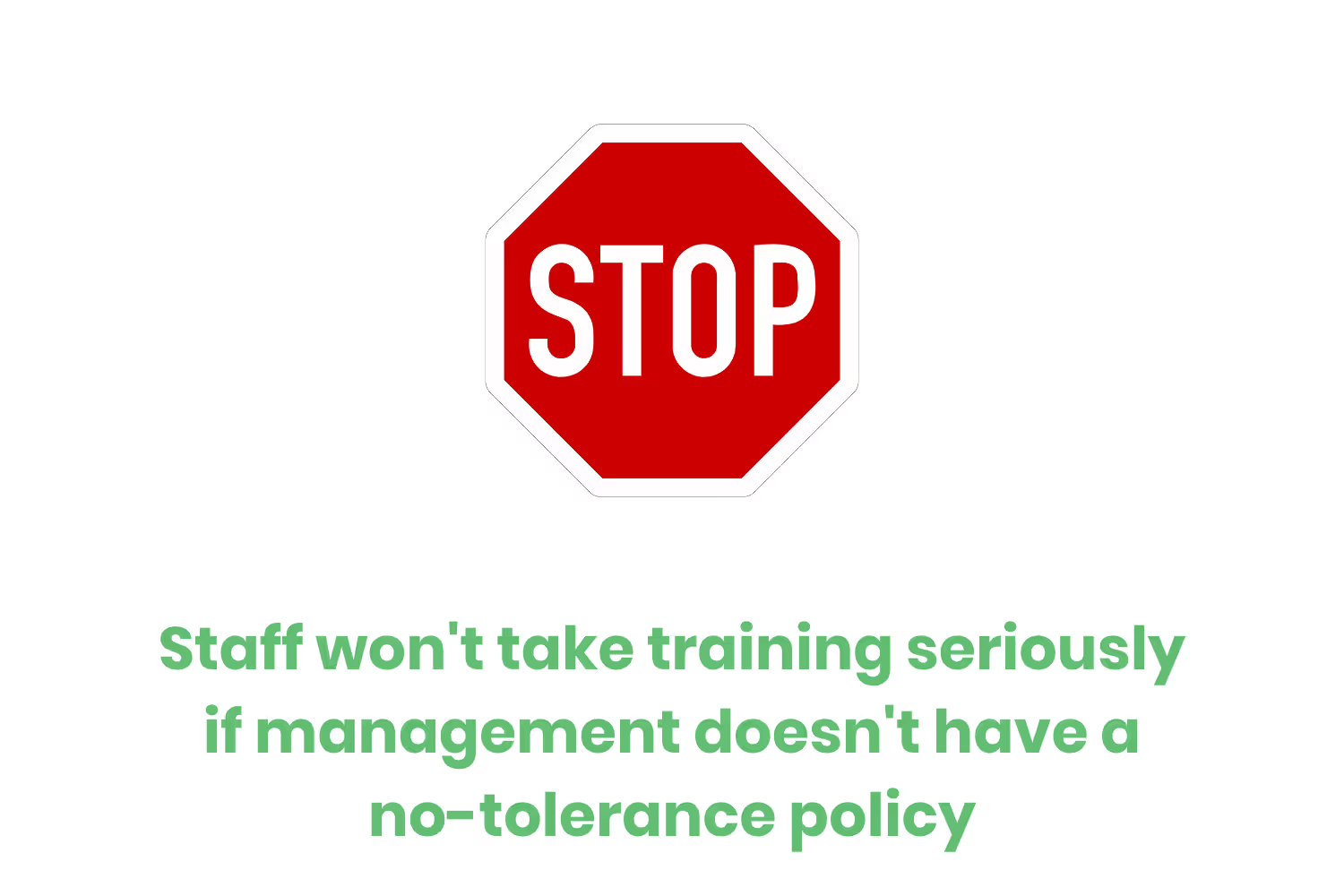
Unfortunately, not all reports of harassment get the attention that they should. Out of 64% of people who made reports, only half of them saw the issue get investigated. If managers don’t look into these situations when they get reported, people will take that as a sign that their superiors don’t entirely care.
Managers can provide as much training as possible, but it won’t make much of an impact if they don’t address issues when they occur. Harassers should receive consequences that align with the severity of their actions. This sets the precedent so that staff knows that the company won’t tolerate any harassment.
Build a Healthy Culture with Respect
Setting a no-tolerance policy is necessary, but wouldn’t it be nice to not have any incidents in the first place?
The company culture must promote a healthy environment rather than a hostile one. After all, there’s truth to the phrase that everything starts from the top-down. If management doesn’t focus on this healthy atmosphere, they’ll see more problems.
For instance, miserable employees just make the workplace more negative. 80% of those who don’t receive respect at work spend time thinking about poor managerial attitudes. If managers disregard building a healthy culture in the office, then it gives them a bad reputation.
And when employees don’t receive respect, they’ll also lose productivity. 48% of them said they deliberately reduced their performance due to a lack of respect.
But having an uplifting atmosphere changes things. People will have more motivation to treat each other well if they’re receiving that positive attitude from their superiors.
In a Harvard Business Review study of over 20,000 employees, respect from leaders was the most important aspect to encourage commitment and engagement. When both managers and colleagues show this respect, it builds community while also decreasing bullying and harassment.

Provide a Person of Contact
Even in a healthy environment, some negative behavior can slip through the cracks. Like I already said, it’s impossible to control what everyone does.
In case any instances of harassment do occur, your company needs to provide a person of contact for victims or witnesses of the behavior. Of course, this person should have formal training for how to handle the situation and take the concerns seriously.
By identifying this contact for the staff, people can report instances to the appropriate party. This better ensures that the situation will get investigated and resolved.
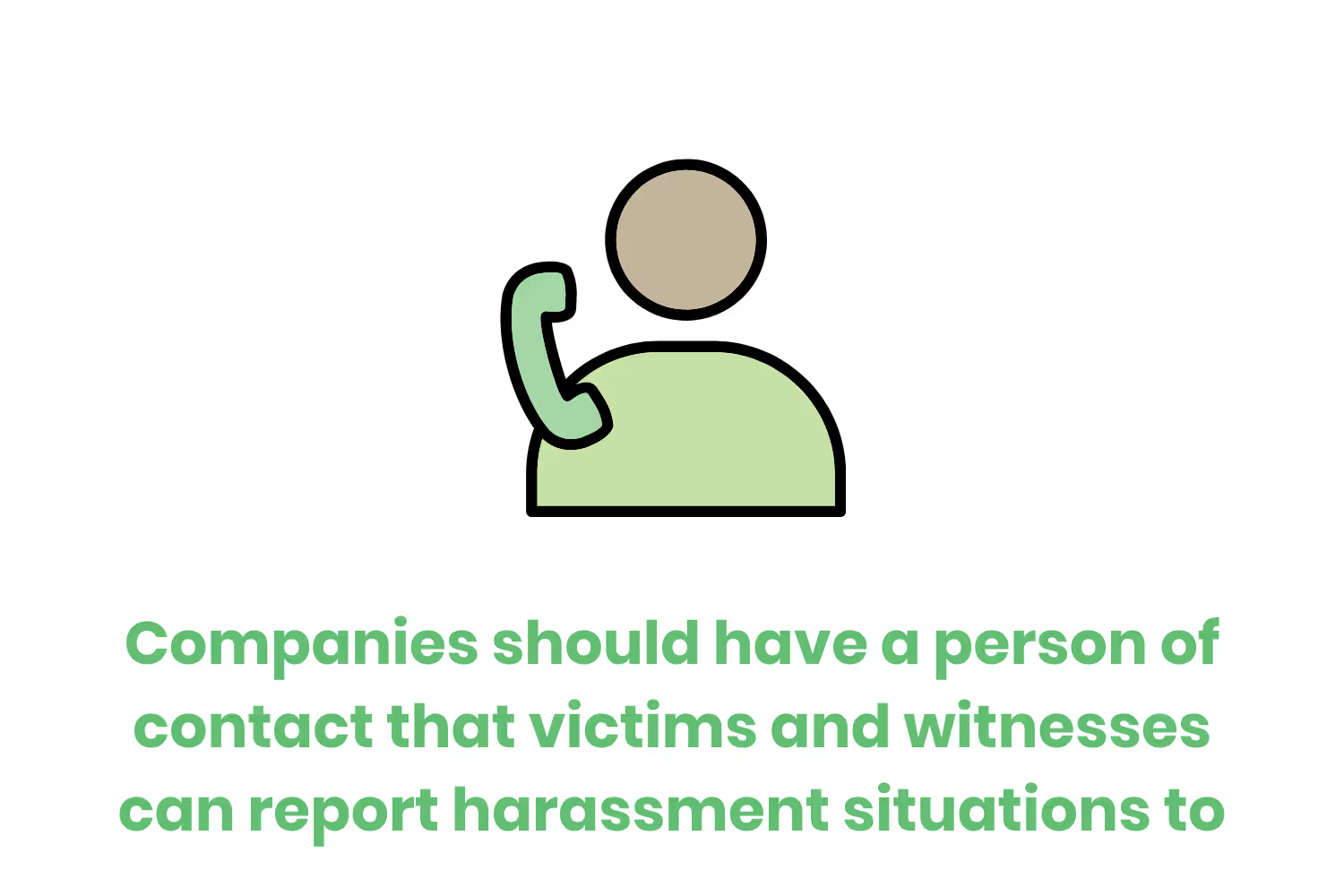
Be Fair With Reports
When employees do make reports, superiors need to be fair with how they handle them. Of course, taking the concerns seriously is step one. This goes back to that zero-tolerance policy.
But it’s more than just firing someone as soon as a person reports an incident. Investigating what happened is necessary so that the harasser receives the appropriate consequences. In some cases, it could even require legal action.
In other scenarios though, it may not be severe enough to result in job termination or legal cases. For example, someone may have made a single joke that they meant with good intentions, but instead, it offended the victim. Since not everyone knows that jokes can qualify as harassment, that one instance could be a teachable moment to ensure it doesn't happen again.
Being fair with reports doesn’t only apply to the harasser, but also the victim. Unfortunately, there are cases where people experience retaliation for reporting the incident. Their superiors will punish them for coming forward.
Shockingly, 71% of sexual harassment charges also included retaliation allegations. This means that the victim received some form of punishment when they brought the situation to their company’s attention.
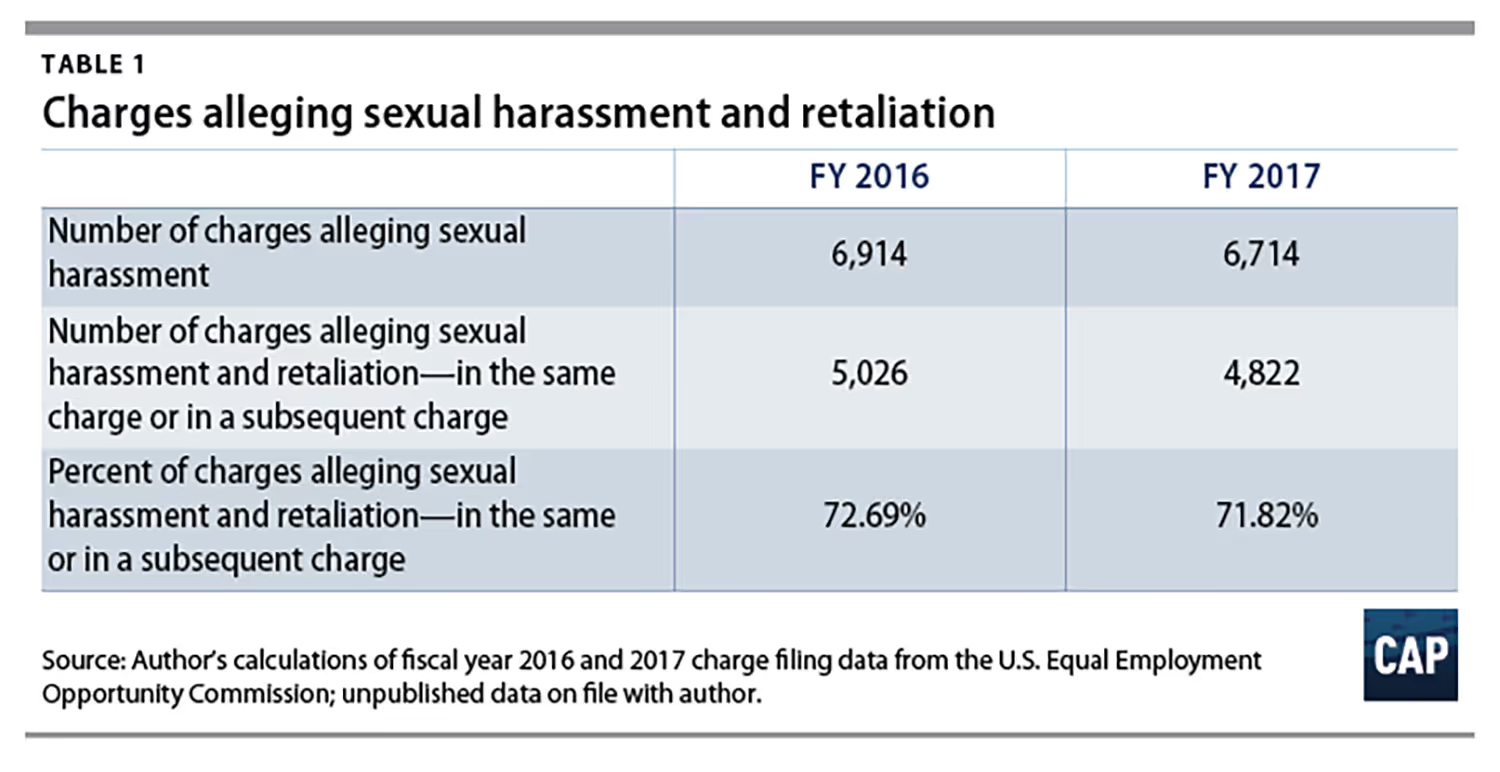
No one is going to feel comfortable making reports if they think they’ll receive punishment instead of the harasser. This wouldn’t prevent the situations from occurring, but rather it would make them more likely to happen. If people know that they can get away with the behavior, then they won’t care as much to show respect to their colleagues.
So to keep that from happening, the report outcomes need to be fair. Victims shouldn’t feel like they’ll face consequences instead of the harasser because then they won’t make the situations known. And the harassers will repeatedly get away with the behavior, creating a more toxic environment.
Respond to Questions and Concerns
Often, people may have questions or concerns about behavior that they hear or see occurring at work. Maybe they don’t know how to make a report. At least 15% of people are unsure how or where to do this. Or they might not know if they should report something to begin with.
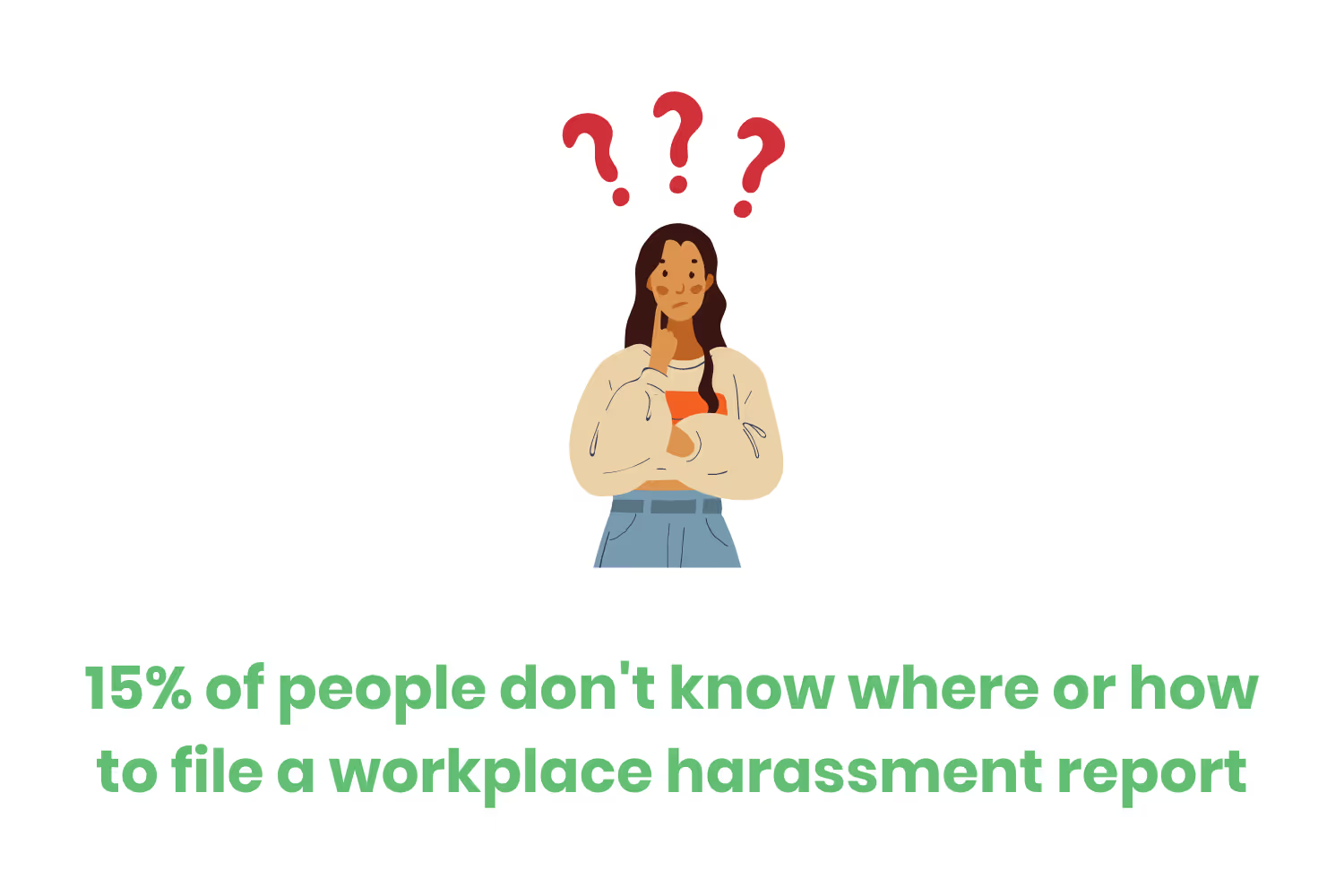
Let your team know that if they have questions or concerns regarding harassment, they can come to you. Being approachable is necessary so that people don't feel like they'll face retaliation.
If they’re able to get their questions answered, they’ll better understand how to identify, prevent, and report harassment.
Conclusion
After going over each of these steps to prevent workplace harassment, it’s important to reiterate that managers need to do their part.
Since respect comes from the top-down, the way that management handles these situations sets the precedent for how employees behave. All the steps I already suggested are ways that managers can improve the workplace to make instances of harassment less likely.
They need to take responsibility by implementing these suggestions since staff members look to their superiors as role models of how to act at work. So if management doesn’t try to prevent workplace harassment, then it would just continue to be a problem.
Emphasize your product's unique features or benefits to differentiate it from competitors
In nec dictum adipiscing pharetra enim etiam scelerisque dolor purus ipsum egestas cursus vulputate arcu egestas ut eu sed mollis consectetur mattis pharetra curabitur et maecenas in mattis fames consectetur ipsum quis risus mauris aliquam ornare nisl purus at ipsum nulla accumsan consectetur vestibulum suspendisse aliquam condimentum scelerisque lacinia pellentesque vestibulum condimentum turpis ligula pharetra dictum sapien facilisis sapien at sagittis et cursus congue.
- Pharetra curabitur et maecenas in mattis fames consectetur ipsum quis risus.
- Justo urna nisi auctor consequat consectetur dolor lectus blandit.
- Eget egestas volutpat lacinia vestibulum vitae mattis hendrerit.
- Ornare elit odio tellus orci bibendum dictum id sem congue enim amet diam.
Incorporate statistics or specific numbers to highlight the effectiveness or popularity of your offering
Convallis pellentesque ullamcorper sapien sed tristique fermentum proin amet quam tincidunt feugiat vitae neque quisque odio ut pellentesque ac mauris eget lectus. Pretium arcu turpis lacus sapien sit at eu sapien duis magna nunc nibh nam non ut nibh ultrices ultrices elementum egestas enim nisl sed cursus pellentesque sit dignissim enim euismod sit et convallis sed pelis viverra quam at nisl sit pharetra enim nisl nec vestibulum posuere in volutpat sed blandit neque risus.

Use time-sensitive language to encourage immediate action, such as "Limited Time Offer
Feugiat vitae neque quisque odio ut pellentesque ac mauris eget lectus. Pretium arcu turpis lacus sapien sit at eu sapien duis magna nunc nibh nam non ut nibh ultrices ultrices elementum egestas enim nisl sed cursus pellentesque sit dignissim enim euismod sit et convallis sed pelis viverra quam at nisl sit pharetra enim nisl nec vestibulum posuere in volutpat sed blandit neque risus.
- Pharetra curabitur et maecenas in mattis fames consectetur ipsum quis risus.
- Justo urna nisi auctor consequat consectetur dolor lectus blandit.
- Eget egestas volutpat lacinia vestibulum vitae mattis hendrerit.
- Ornare elit odio tellus orci bibendum dictum id sem congue enim amet diam.
Address customer pain points directly by showing how your product solves their problems
Feugiat vitae neque quisque odio ut pellentesque ac mauris eget lectus. Pretium arcu turpis lacus sapien sit at eu sapien duis magna nunc nibh nam non ut nibh ultrices ultrices elementum egestas enim nisl sed cursus pellentesque sit dignissim enim euismod sit et convallis sed pelis viverra quam at nisl sit pharetra enim nisl nec vestibulum posuere in volutpat sed blandit neque risus.
Vel etiam vel amet aenean eget in habitasse nunc duis tellus sem turpis risus aliquam ac volutpat tellus eu faucibus ullamcorper.
Tailor titles to your ideal customer segment using phrases like "Designed for Busy Professionals
Sed pretium id nibh id sit felis vitae volutpat volutpat adipiscing at sodales neque lectus mi phasellus commodo at elit suspendisse ornare faucibus lectus purus viverra in nec aliquet commodo et sed sed nisi tempor mi pellentesque arcu viverra pretium duis enim vulputate dignissim etiam ultrices vitae neque urna proin nibh diam turpis augue lacus.




